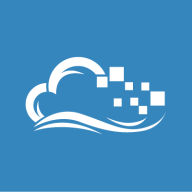

Find out what your peers are saying about JFrog, Amazon Web Services (AWS), GoHarbor and others in Container Registry.

A managed registry made for developers
Before deploying your app, you're going to want to put your container images somewhere. Our registry lets you store containers for rapid deployment to DigitalOcean Kubernetes.
Simple
Build your container images on any machine, and push them to DigitalOcean Container Registry with the Docker CLI. DigitalOcean Kubernetes seamlessly integrates to facilitate continuous deployment.
Private
Protect sensitive software by storing container images in private repositories. With DigitalOcean Teams, you easily give access to coworkers – and no one else.
Secure
Transfer container images over high speed HTTPs connections to servers across four continents. Container images are stored safely and encrypted at rest.
Red Hat Quay is a private container registry that stores, builds, and deploys container images. It analyzes your images for security vulnerabilities, identifying potential issues that can help you mitigate security risks.
We monitor all Container Registry reviews to prevent fraudulent reviews and keep review quality high. We do not post reviews by company employees or direct competitors. We validate each review for authenticity via cross-reference with LinkedIn, and personal follow-up with the reviewer when necessary.